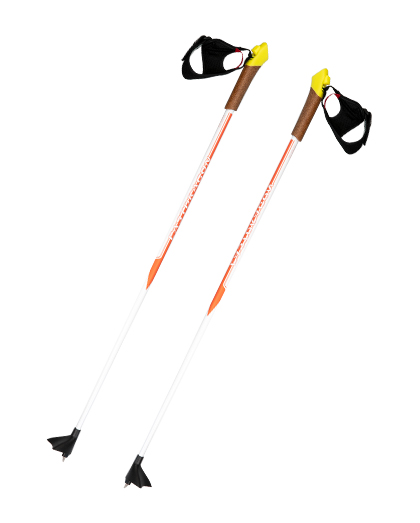

Sizing poles with the various cross country ski techniques depends heavily on whether you will be using one as your only pole or if you also have a back up pole. That being said, with the proper sizing tips, having the right cross country poles can help you get the best turn possible on the slopes. Since every style of cross country ski has a different technique, usually the recommended size for poles differs depending on which type of skiing you'll be performing.
For short cross country skiers, such as those who frequently go down to within eight feet of the top of the mountain, there is no need to size your poles properly. These skiers usually just use their edges and stay within a few inches of the edge. For this type of skiing, which can also be called groomed skiing, you don't need to size your poles larger than ten inches long. Because these skiers often ski with their edges towards the front of the pack, they don't need to use very large cross country poles, typically no more than ten inches in length. You should stick to this size when skiing short distances. When you get closer to the summit, you can increase the length of your poles.

When you go cross country racing, you don't necessarily want a shorter or thicker cross country pole because it allows you more flexibility in your movements and ability to move more quickly. However, as with all athletic endeavors, you do want to choose the correct size for your skill level. If you're a beginner skier, you don't necessarily need to go with the heaviest weight poles and as your skills improve, you can increase the size of your composite skis. Just remember that lighter weight poles have less distance to them and that heavier ones have more power and give you a better edge.
Some people who participate in cross-country skiing are using shorter, less expensive poles. Some are using ultralight, single ply poles. The decision between heavier and lighter poles comes down to comfort. Longer poles provide more stability, which is especially important when going up steep slopes. However, even experienced skiers can benefit from having light poles.
Different types of cross country poles have different shafts. Some of them are made of bonded steel while others are made of carbon. Carbon composite poles are lightweight and durable. Bended steel shafts, on the other hand, are strong and can handle a lot of skiing. If you're going to go with a carbon shaft, look for a carbon composite that has at least ten percent nitrogen.
The next thing to consider when choosing your carbon fiber pole is how strong it is. Most companies make their own composite shafts, but some companies like Spy and EDH provide both quality and price. Make sure that the length of the shaft is based on the length of your legs. The larger you are, the longer the poles need to be. They also need to have good balance properties - they'll be harder to hold but will feel much better if you don't have to hold them as tight.
When choosing your carbon composite poles take into account your overall height. If you're shorter, go with shorter shafts. If you're taller, go with longer shafts. Balance properties will vary according to the balance properties of the glass fiber material. Some of the shafts offer little in the way of flexibility, but all the better to have strong balance properties.
Most people choose to have boots with built in foot rests. This is an excellent idea if you plan to be doing a lot of walking around in the woods with your poles. Cross country skiers and riders will benefit greatly from small baskets to carry their skis and poles. Many of the newer models of these poles come with built in skis that are very handy for skiing manholes and small embankments where you might be trying to catch your speed. Overall, the best type of poles for cross country use are those with sturdy wood handles that are at least 9.5 inches long to avoid being grabbed by a passing skier or snow bee.